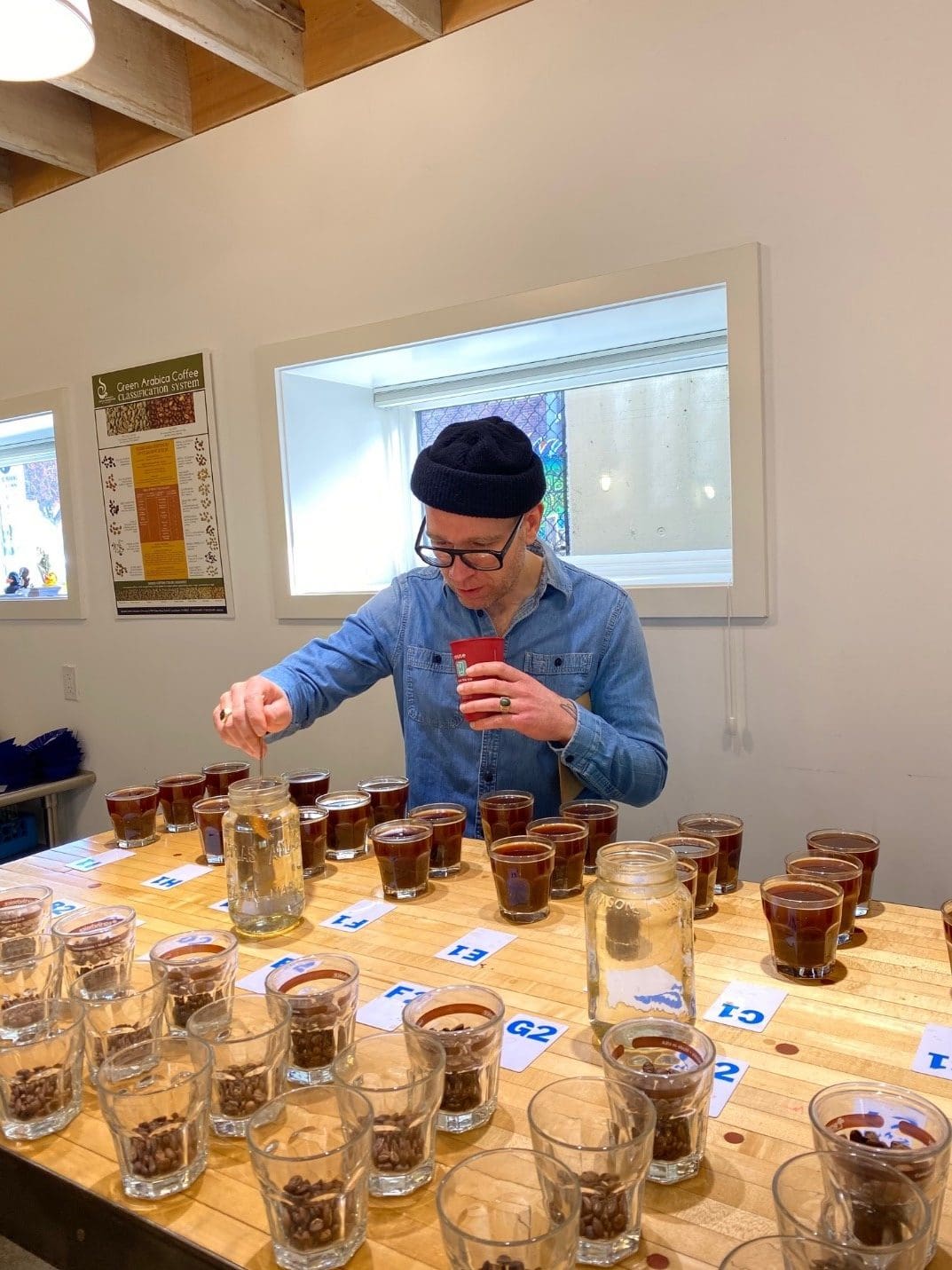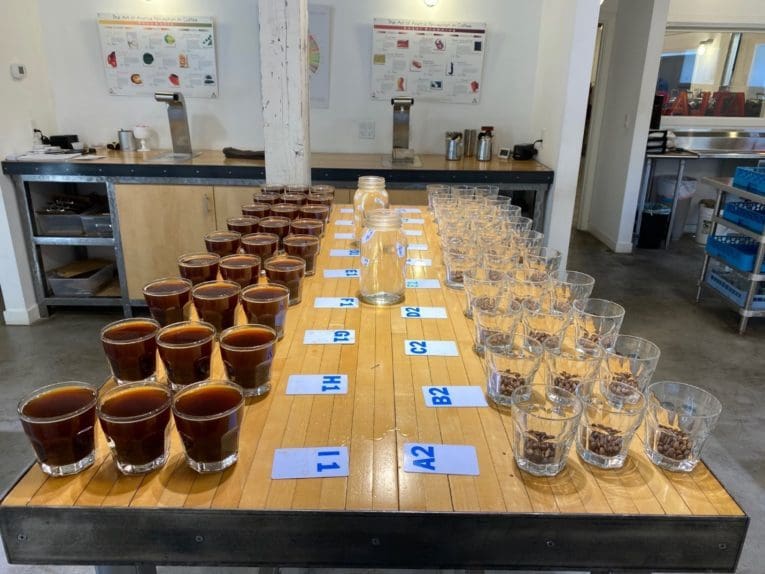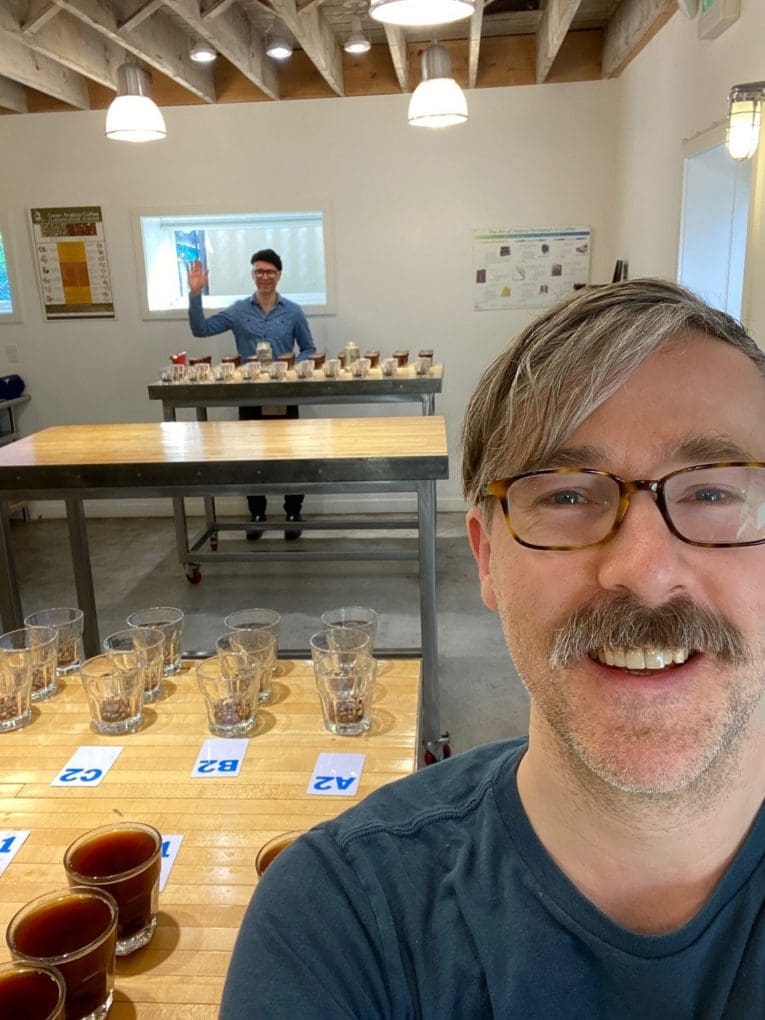The arrival of COVID-19 has brought many changes. Standard patterns are no longer advised or even possible. These last few weeks have brought a cascading series of adaptations – just as we get used to the new normal; there’s a new, new normal. But during all this change, some things carry on. For us at Atlas, cupping is one such thing.
You may have read about the SCA’s version of coronavirus cupping or seen this helpful video demonstration by Trish Rothgeb. Cupping is essential to our business; we cup every Tuesday through Friday. We receive a constant stream of Preshipment and Offer samples from our producer partners along with arrival samples as containers reach their final destinations. Receiving, identifying, logging, evaluating, and recording these samples forms the core of what we do in the Atlas lab. If our efforts were to lapse for any length of time, we would quickly become buried under a deluge of samples. Because of the speed and efficiency we require, along with the meaningful and detailed sensory information that we need to capture, it was quickly apparent to us that we would need to find our solution to cup safely and healthily in the time of coronavirus.
I have sometimes joked that I would be a better cupper if I only had three arms. In regular times, cupping can seem like an awkward physical balancing act as the cupper seeks to keep a pencil, cupping spoon, spit cup, and clipboard with form all accessible and at the ready. The SCA’s version adds to this an additional tasting glass, and for me, this is the final card that makes the house of cards collapse. In Trish’s adaptation, she adds another water well to rinse and cleanse the tasting glass, which, in my view, is an essential improvement to avoid contamination, but also adds another layer of complexity. So what we end up with is a rather cumbersome and slow process that lacks any kind of flow as we try to cycle our upper appendages from spoon and glass to spit cup, to pencil and form, and back again. What we need at this point is a dental cart to roll around with us to keep all of our tools accessible and in order. In addition to the awkwardness, we are still all sharing the same space and tasting out of the same cups, which leaves ample openings for virus spread due to proximity or mistakes.
An essential part of our QC program at Atlas is the use of a cupping panel to collect sensory information. We have a cupping panel of eight trained cuppers that contribute to generating reliable results. So our task was to develop a method of cupping that would allow for the input of multiple tasters in an efficient process while avoiding health risks and maintaining proper social distancing.
Here is what we came up with and how we got there. Our sample roaster roasts 100-gram batches of green coffee and yields in the neighborhood of 86 grams of roasted coffee. We didn’t want to further slow down our process by trying to roast two batches of every sample. Our cupping glasses require a 10.5-gram dose. As a result, we have just enough material to set up eight cups and have enough left over for a small purge. Having the need and the desire to maintain a system of evaluating coffee for uniformity and freedom from defects required a minimum of two cups per taster in order to have a basis for comparison.
So a few weeks ago, we instituted a system using four tasters in which each cupper tastes two cups of each sample evaluated. No one else shares those same cups, and each cupper has their own workspace and rinse wells to maintain social distance and prevent all possibility of contamination. Our standard practice is to cup 10-12 coffees per session and two sessions per day max. With only two cups per sample, we place one behind the other, and the space required for each cupper is rather minimal, fitting comfortably on one side of a table. In our lab, we have four tables, so each cupper has their own table to maintain the all-important social distance.
Each cupper sets up and doses their cups, then grinds them, and delivers water to their station. Afterward, each cupping participant clears off their table, dumps their grounds, and runs their own set of dishes through the dishwasher. At the end of each day, all surfaces are sanitized.
We cup blind using an alphabetical code series that we are careful to coordinate and maintain across all the individual cupper stations. Then at the end of each session, we discuss our perception of the samples one at a time, unveiling their identities and collecting cupper scores to generate an average. We have to rely on each individual to notice and flag any defects in their set as there is no means for group verification. This situation presents some increased risk that a defect will be overlooked, but our team has spent time in the past training on defect recognition, so for us, that risk is minimal.
And the situation continues to evolve. While we began this practice using four of our eight cupping panelists to perform each days’ cupping, we have since mostly shut our offices down except for a skeleton crew. At this point, two QC cuppers remain in place every morning working to ensure that all the coffees that we receive meet our expectations and yours.
In the era of coronavirus, uncertainty is the new norm. Finding a workable, safe, and efficient cupping adaptation has allowed us to maintain an essential business task amid disruption.
Additionally, as someone for whom cupping is a daily routine, it has provided me a small but significant sense of normalcy amidst the chaos. If you are out there, still trying to get the work done, I applaud you. And if your job involves cupping and QC, I hope these thoughts are helpful. Feel free to use and adapt anything here to your circumstances. Stay healthy, keep moving, and we’ll all get through this together!


